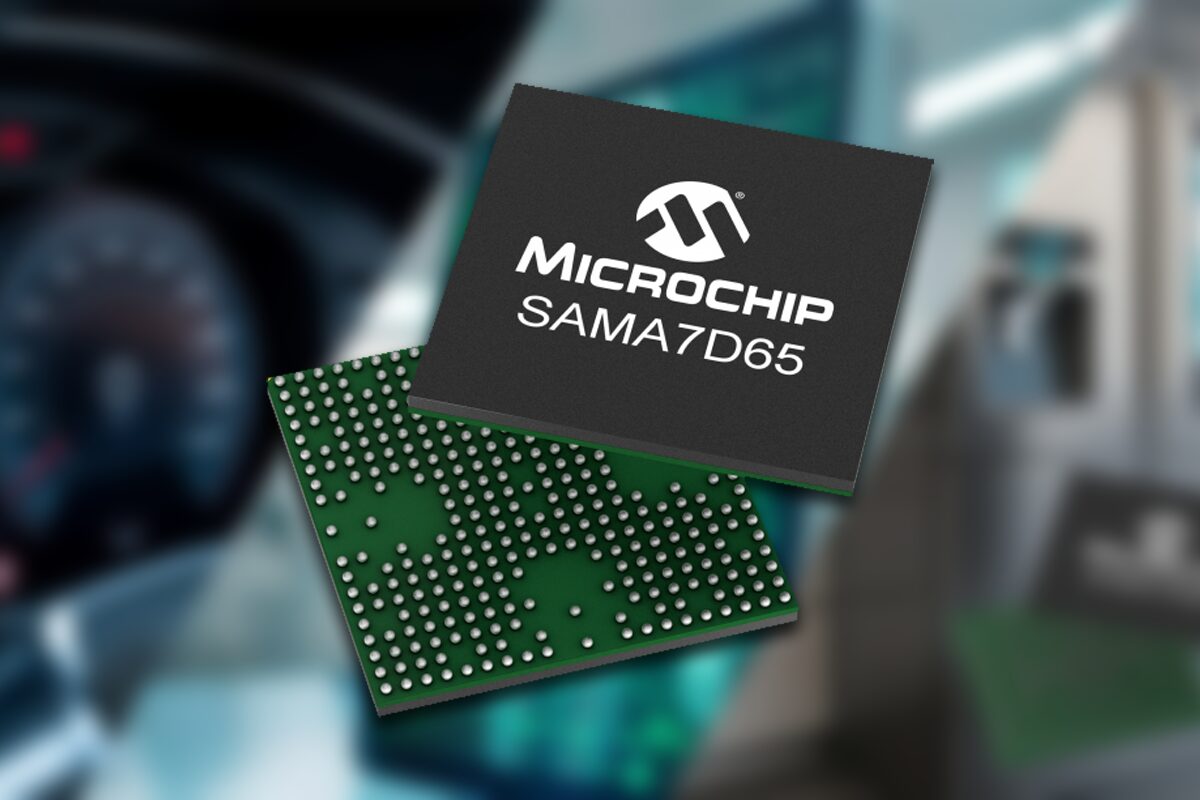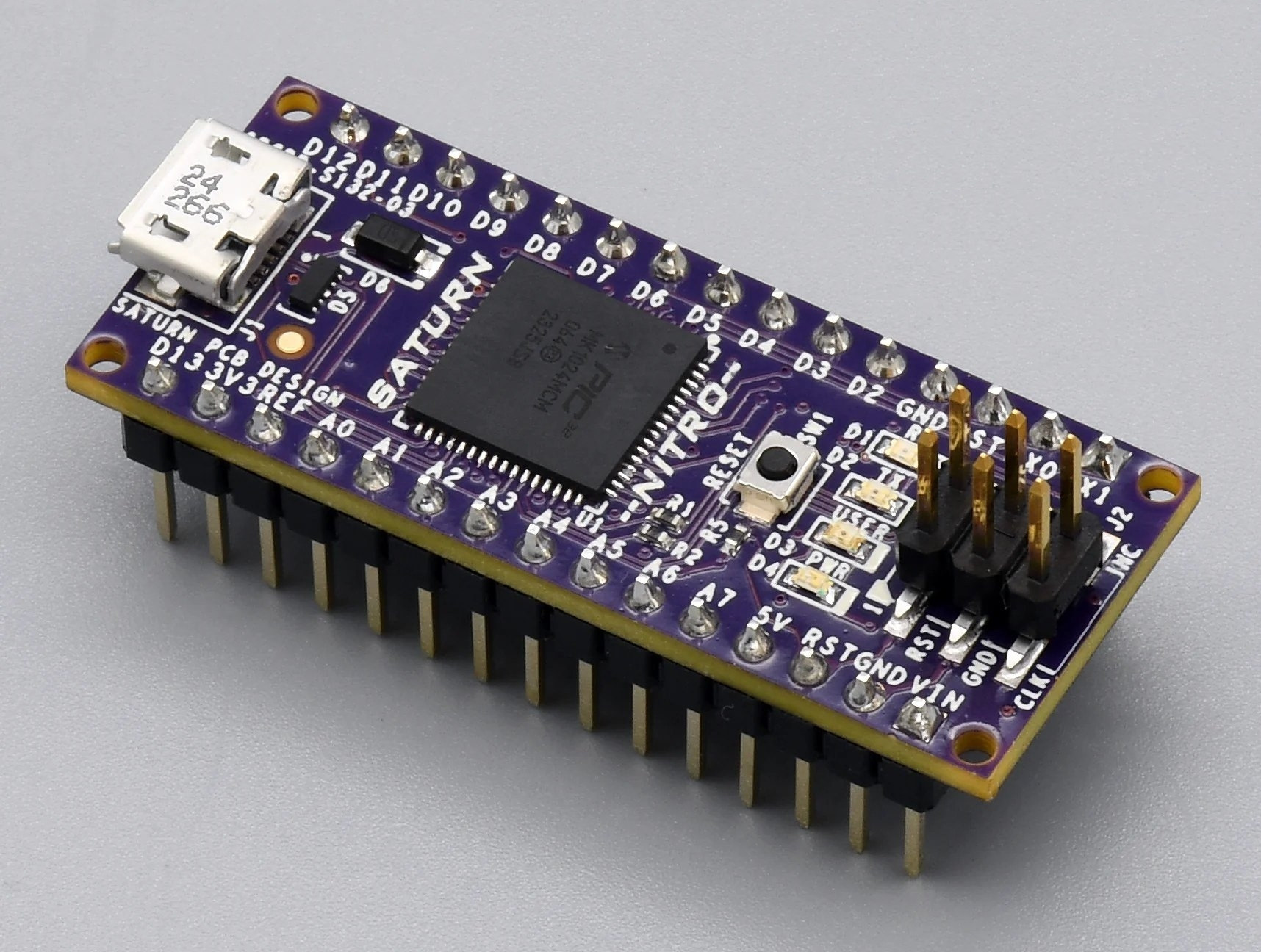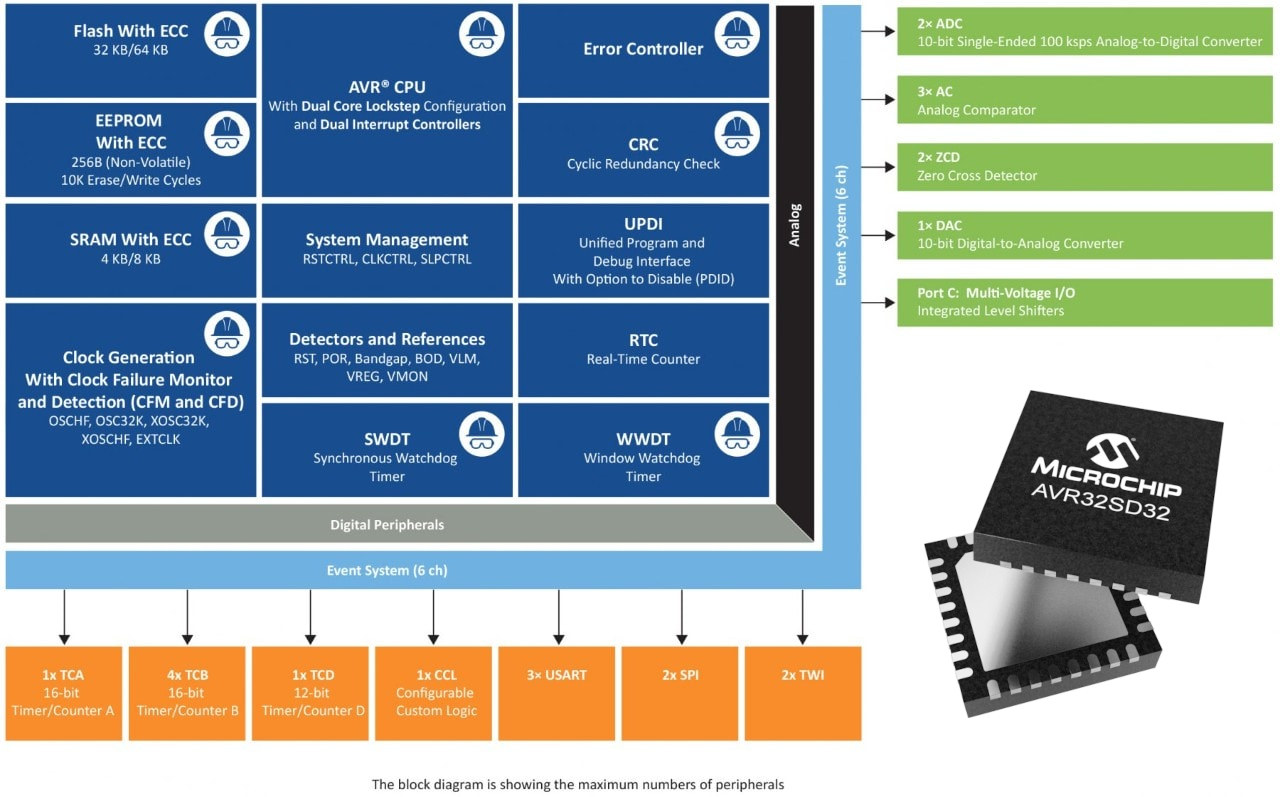Microchip has recently released the SAMA7D65 MPU, a high-performance Arm Cortex-A7 embedded processor designed for HMI and connectivity applications across industrial, home, medical, and appliance markets. The MPU is available in both System-in-Package (SiP) and System-on-Chip (SoC) variants and features various display interfaces, including MIPI DSI, LVDS, and 8-bit Serial RGB interfaces, along with a 2D GPU for graphical acceleration. Memory and storage options include support for 16-bit DDR2/DDR3/DDR3L and LPDDR2/3 memory, optional 1 Gbit or 2 Gbit DDR3 RAM, NAND Flash, eMMC Flash, and SD card. It features dual Gigabit Ethernet with TSN support, an I3C controller, five CAN-FD interfaces, and three high-speed USB ports. Additionally, it comes with various security features, including physically unclonable function (PUF), secure boot, key storage, and cryptographic accelerators for AES, SHA, RSA, and ECC. Microchip SAMA7D65 SoC/SiP specifications: CPU – Arm Cortex-A7 core up to 1 GHz Arm TrustZone, NEON, FPU 32KB L1 I-cache […]
SATURN NITRO – A Microchip PIC32MK development board with Arduino Nano form factor
While Microchip regularly releases PIC32 microcontrollers and evaluation kits, we don’t see that many PIC32 development boards from third parties. The SATURN NITRO is an exception, and the Arduino Nano-inspired development board is equipped with a 120 MHz PIC32MK general-purpose and motor control 32-bit MIPS microcontroller with 256KB SRAM, 1024KB flash, and 4KB EEPROM. The board closely follows the design of the official Arduino Nano board and can be seen as a beefed-up version with a much more powerful microcontroller delivering 198 DMIPS compared to the Microchip ATmega328P 8-bit microcontroller @ 16 MHz with just 2KB SRAM, 32 KB flash, and 1KB EEPROM, and a less capable I/Os. SATURN NITRO specifications: MCU – Microchip PIC32MK1024MCM064 Core – MIPS32 microAptiv MCU core @ 120 MHz with FPU; up to 198 DMIPS Memory – 256 KB SRAM Storage – 1MB flash, 4KB EEPROM USB – 1x Micro USB OTG port also used […]
Microchip AVR SD 8-bit dual-core microcontrollers offer functional safety for less than one dollar
Microchip AVR SD family of low-cost 8-bit microcontrollers (MCUs) feature built-in functional safety (FuSa) mechanisms designed to meet Automotive Safety Integrity Level C (ASIL C) and Safety Integrity Level 2 (SIL 2) requirements, both of which mandate redundant safety checks. Hardware safety features include a dual-core lockstep CPU, two ADCs for redundancy, an Error Correction Code (ECC) on all memories, a dedicated error controller module, error injection mechanisms, and voltage and clock monitors. The company further explains the AVR SD MCU meets Fault Detection Time Interval (FDTI) targets as low as 1 millisecond, and its functional safety management system has been certified by TÜV Rheinland. Microchip AVR SD specifications: MCU core – AVR CPU in Dual-Core Lockstep (DCLS) clocked at up to 20 MHz Memory – 4 KB or 8KB SRAM with ECC Storage 32 KB or 64KB in-system-programmable Flash memory with ECC 256B EEPROM with ECC 512B of user […]
Microchip PIC32A is a 32-bit MCU family with high-performance analog peripherals supporting up to 40 Msps
Microchip Technology PIC32A is a new family of 32-bit microcontrollers clocked at up to 200 MHz with high-speed analog peripherals that include up to 40 Msps 12-bit ADCs, high-speed 5 ns comparators and 100 MHz operational amplifiers for smart edge sensing. The PIC32A microcontrollers also feature up to 16KB RAM with ECC, up to 128KB flash, various I/O, and security and safety features that make them suitable for general-purpose applications across automotive, industrial, consumer, Artificial Intelligence (AI), Machine Learning (ML), and medical markets. Microchip PIC32A specifications: MCU core – 32-bit CPU @ up to 200 MHz with 64-bit FPU, instructions optimized for speed and program code size Memory – Up to 16KB RAM with ECC Storage – Up to 128KB flash with 64x 128-bit OTP area Peripherals 4x PWM generators with up to 2.5ns resolution 3x 4-wire SPI 2x I2C 3x UART; automated UART handling support for LIN 2.2, Digital […]
New Microchip maXTouch M1 automotive touchscreen controllers support curved displays, physical Knob-on-Display technology
Microchip Technology’s ATMXT3072M1 and ATMXT2496M1 add to the existing maXTouch M1 automotive touchscreen controllers and are designed for large, curved, free-form displays, including ones using OLED and microLED technologies. These controllers support up to 112 reconfigurable touch channels (or 162 in ultra-wide mode), enabling touch functionality for displays up to 20-inch (16:9 format) or 34-inch (7:1 format) in size. Additionally, they use smart mutual touch acquisition to enhance signal-to-noise ratio (SNR) by +15 dB, ensuring reliable touch detection in high-capacitive environments. The controllers also feature integrated Knob-on-Display (KoD) technology for physical control knobs on touchscreens and low-latency haptic feedback for enhanced user interaction. The controls meet ASIL-A and B safety standards and support OTA firmware updates with SHA-512 authentication for cybersecurity compliance (ISO 21434:2021). All these features make these MCUs suitable for user-friendly infotainment and dashboard systems. Microchip ATMXT3072M1 and ATMXT2496M1 specifications Touchscreen channels ATMXT3072M1 – 112 fully configurable sensor […]
Linux 6.13 Release – Main changes, Arm, RISC-V, and MIPS architectures
Linus Torvalds has just announced the release of Linux 6.13 on the Linux Kernel Mailing List: So nothing horrible or unexpected happened last week, so I’ve tagged and pushed out the final 6.13 release. It’s mostly some final driver fixes (gpu and networking dominating – normal), with some doc updates too. And various little stuff all over. The shortlog is appended for people who want to see the details (and, as always, it’s just the shortlog for the last week, the full 6.13 log is obviously much too big). With this, the merge window for 6.14 will obviously open tomorrow. I already have two dozen pull requests pending – thank you, you know who you are. Linus Release about two months ago, Linux 6.12 – the new LTS version – brought us real-time “PREEMPT_RT” support that had always required out-of-tree patchsets until now, the completion of the EEVDF (Earliest Eligible […]
Microchip PIC64HX1000 64-bit RISC-V AI MPU delivers post-quantum security for aerospace, defense, and automotive applications
Microchip recently unveiled the PIC64HX1000 64-bit RISC-V AI microprocessor (MPU) family designed for mission-critical intelligent edge applications in the aerospace, defense, industrial, and medical sectors thanks to a quantum-resistant design. These new MPUs feature eight SiFive’s Intelligence X280 cores, each clocked at 1 GHz. The MPUs are engineered with a decoupled vector pipeline enabling 512-bit operations enabling the PIC64HX1000 to achieve up to 2 TOPS for AI/ML processing and come equipped with integrated Time-Sensitive Networking (TSN) Ethernet connectivity. This new microprocessor includes a dedicated system controller for runtime monitoring and fault management, WorldGuard architecture for workload isolation, and post-quantum defense-grade cryptography, which includes the NIST-standardized FIPS 203 and FIPS 204 cryptographic algorithms, ensuring protection against future quantum computing threats. PIC64HX1000 64-bit AI MPU specification MPU variants PIC64HX1000 – IN (Industrial) PIC64HX1000 – AV (Aviation) PIC64HX1000 – MI (Military) CPU – 8x 64-bit RISC-V cores (SiFive X280), up to 1 GHz, […]
Microchip PIC32MZ-W1 is a 32-bit MIPS WiFi MCU with 60+ GPIO, USB, CAN Bus, Ethernet, and more
Microchip recently released the PIC32MZ-W1 wireless MCU along with 20 other WiFi parts, including WiFi MCUs, link controllers, network controllers, and plug-and-play modules. Among them, the PIC32MZ-W1 wireless MCU is the most interesting because of its 32-bit MIPS microAptiv M-class core running at up to 200MHz, advanced hardware security features, and integrated Microchip Trust Platform for secure cloud authentication. Over the years ESP32 MCUs have become the go-to choice for wireless applications. Still, one problem we always have with ESP32 SoCs is their limited GPIO option due to their strapped-out pin structures. But this new MCU has over 60 GPIO pins to work with along with Ethernet MAC, USB, CAN Bus, CANFD, SPI, I2C, SQI, UART, ADC, JTAG, and more. PIC32MZ-W1 wireless MCU specifications MCU MIPS32 M-Class core clocked at 200 MHz 16KB I-Cache, 16KB D-Cache microMIPS mode (up to 35% smaller code size) DSP extensions (4x 64-bit accumulators, single-cycle […]










